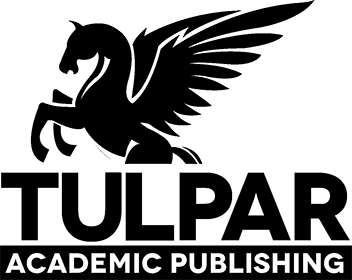Nonlinear finite element analysis of strength and durability of reinforced concrete and composite structures
DOI: https://doi.org/10.20528/cjsmec.2015.09.030
View Counter: Abstract | 1680 times | ‒ Full Article | 485 times |
Full Text:
PDFAbstract
The finite element method has emerged as the most powerful and versatile numerical method for solving a wide range of physical problems in science and engineering. Today a large number of commercial programs exist that can be used to solve diverse problems in structural and fluid mechanics, heat transfer and many other phenomena. However, certain critical problems related to durability of concrete structures, especially corrosion of reinforcement, cannot be readily solved using the available software. This paper presents two finite element formulations, developed by the writers, one dealing with the nonlinear analysis of composite concrete-steel bridges, and the other with the durability of concrete structures, with emphasis on the corrosion of reinforcement. The validity and accuracy of the proposed models are demonstrated by comparing their results with appropriate experimental data.
Keywords
References
Broomfield JP (1997). Corrosion of Steel in Concrete. E&FN Spon, London, UK.
http://dx.doi.org/10.4324/9780203414606
Dhatt G, Touzot G (1984). The Finite Element Method Displayed. J. Wiley & Sons, New York, USA.
Esfandiari A (2001). Redistribution of Longitudinal Moment in Straight Continuous Concrete Slab-Steel Girder Composite Bridges. M.Sc. thesis, Department of Civil and Environmental Eng., Carleton University, Ottawa, Canada.
Isgor OB, Razaqpur AG (2004). FE modelling of coupled heat transfer, moisture transport and carbonation processes in concrete structures. Journal of Cement and Concrete Composites, 26, 57-73.
http://dx.doi.org/10.1016/S0958-9465(02)00125-7
Isgor OB, Razaqpur AG (2005). Verification and application of a comprehensive model for predicting steel corrosion in concrete structures. Proceedings of ConMat '05, Vancouver, Canada.
Isgor OB, Razaqpur AG (2006a). Advanced modelling of concrete deterioration due to reinforcement corrosion. Canadian Journal of Civil Engineering, 33, 707-718.
http://dx.doi.org/10.1139/l06-007
Isgor OB, Razaqpur AG (2006b). Modelling reinforcement corrosion in concrete structures. International Journal of Materials and Structures, 39, 291-302.
http://dx.doi.org/10.1007/s11527-005-9022-7
Kupfer H, Gerstle KH (1973). Behavior of concrete under biaxial stresses. Journal of the Engineering Mechanics Division, ASCE, 99(4).
Li CQ (2001). Initiation of chloride-induced reinforcement corrosion in concrete structural members – Experimentation. ACI Structural Journal, 98(4), 502-510.
Logan DL (1992). A First Course in Finite Element Method. PWS Publishing, Boston, USA.
Martín-Pérez B (1999). Service Life Modeling of RC Highway Structures Exposed To Chlorides. Ph.D thesis, University of Toronto, Toronto, Canada.
Maruya T, Hsu K, Takeda H, Tangtermsirikul S (2003). Numerical modelling of steel corrosion in concrete structures due to chloride ion, oxygen and water movement. Journal of Advanced Concrete Technology, 1(2), 147-160.
http://dx.doi.org/10.3151/jact.1.147
Munn RS (1982). A mathematical model for galvanic anode cathodic protection system. Materials Performance, 21, 29-41.
Neville A (1996). Properties of Concrete. 4th ed., J. Wiley & Sons, New York, USA.
Razaqpur AG, Nofal ME (1988). Transverse load distribution at ultimate limit states in single span slab on girder bridges with compact steel girders. Final Report, Proj: 23182, Ministry of Transportation of Ontario, Downsview, Ontario.
Razaqpur AG, Nofal M (1989). A finite element for modeling the nonlinear behavior of shear connectors in composite structures. Journal of Computers and Structures, 32(1), 169-174.
http://dx.doi.org/10.1016/0045-7949(89)90082-5
Razaqpur AG, Nofal M (1990). Analytical modeling of nonlinear behavior of composite bridges. Journal of Structural Engineering, ASCE, 116(6), 1715-1733.
http://dx.doi.org/10.1061/(ASCE)0733-9445(1990)116:6(1715)
Stern M, Geary AL (1957). Electrochemical polarization: a theoretical analysis of the shape of the polarization curves. Journal of the Electrochemical Society, 104(1), 56-63.
http://dx.doi.org/10.1149/1.2428496
Turner MJ, Clogh RW, Martin HC, Topp LJ (1956). Stiffness and deflection analysis of complex structures. Journal of Aeronautical Science, 23, 805-823.
http://dx.doi.org/10.2514/8.3664
Tuutti K (1982). Corrosion of Steel in Concrete. Technical Report, Swedish Cement and Concrete Research Institute, Stockholm.
Uhlig HH, Revie RW (1985). Corrosion and Corrosion Control. 3rd ed., J. Wiley & Sons, New York, USA.
Yam LCP, Chapman JC (1972). The inelastic behavior of continuous composite beams of steel and concrete. Proceedings, Institute of Civil Engineers, 53, 487-501.
http://dx.doi.org/10.1680/iicep.1972.5346
Zienkiewicz OC, Taylor RL (1989). The Finite Element Method. Vol. 2, 4th ed., McGraw-Hill International, UK.
Refbacks
- There are currently no refbacks.








